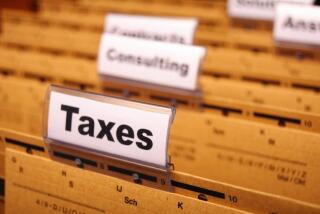How to Avoid Year-End Mutual Fund Tax Trap
Mutual fund companies are reporting a surge in investment activity since Bill Clinton was elected president earlier this month.
However, some investment specialists fear that the new money is coming from investors unfamiliar with the complicated rules governing the mutual fund industry. If so, these new investors could be in for an unpleasant surprise.
Those who pour money into mutual funds during the last few months of the year often end up paying taxes on illusory dividends and capital gains. Itâs costly and, tragically, for those who get caught in this trap, completely avoidable.
The reason this happens has to do both with the tax law and the way mutual funds are structured.
Open-ended mutual funds typically sell for a price equal to the pro-rata value of the fundsâ shares, plus accumulated dividends and capital gains. In other words, if the value of a fundâs investment portfolio--including stocks, bonds and cash--was $200 million and the fund had issued 20 million shares, the share price would be $10.
When you pay your $10, you are buying a piece of every stock that fund owns, plus any capital gains the fund may have realized during the year but not yet paid out.
By law, mutual funds must distribute the vast majority of their capital gain and dividend income to investors before year end. These distributions are taxable, even when investors take additional shares in lieu of cash, and even when they have no true gain.
To clarify, consider John Smith, who spent $5,000 on 500 shares of a hypothetical fund Dec. 1. The fund doesnât appreciate over the course of the month, but the fund declares a dividend and capital gains distribution of $1 a share on Dec. 31. As a result, the pro-rata value of the fundâs shares falls to $9, from the $10 Smith paid.
The fund automatically reinvests the distribution for Smith and other shareholders, so they get no cash, just more shares. Smith, for example, now has 555.55 shares worth $9 each instead of 500 worth $10. His investment is still worth the same $5,000. No taxable gain, right? Wrong.
As far as tax authorities are concerned, Smith earned $500. Because he is in the 28% tax bracket, his federal tax on the gain amounts to $140, due April 15.
This is what experts call a âtiming difference,â because somewhere down the line the investor will get the money back. Specifically, the $140 tax payment will increase the âbasisâ Smith has in the fundâs shares, so when he eventually sells, heâll report a smaller gain.
Nevertheless, long-term investors may not get the money back for years. And in the meantime, that $140 could have been invested and earning a profit.
How do you avoid this tax trap? Before you buy a fund at this time of year, simply call the fund to find out when it plans to distribute its gains. Wait to buy until a few days after the distribution date.
Of course, if you believe that the fund youâve chosen is likely to appreciate substantially between now and when you can invest without incurring the tax penalty, invest now. It never makes sense to forgo $1 in real income to avoid paying 28 cents in tax.
More to Read
Inside the business of entertainment
The Wide Shot brings you news, analysis and insights on everything from streaming wars to production â and what it all means for the future.
You may occasionally receive promotional content from the Los Angeles Times.










